October 2024
The ship crossed into the Arctic Circle in the middle of the night.
The word Arctic has a fascinating etymology.
The word “artik “pertains to the north pole of the heavens,” from Greek arktikos “of the north,” literally “of the (constellation) Bear,” from arktos “bear;” also “Ursa Major; the region of the north,” the Bear being the best-known northern circumpolar constellation. Then to round up this vocabulary lesson: antartyk “opposite to the north pole”
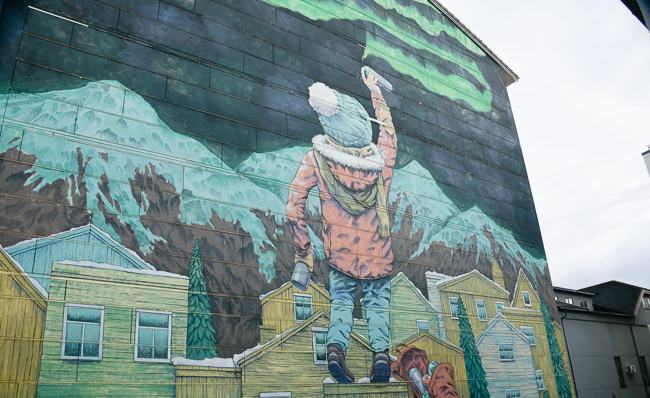
Painting the Northern Lights in Bodø
A quick stop in Bodo for a look around.
Bodø is a port town at the entrance to Salt Fjord. Bodø was founded by Trondheim merchants and chartered in 1816. Bodo is a commercial fishing center specializing in cod drying. In World War II, German air and ground action destroyed much of the town.
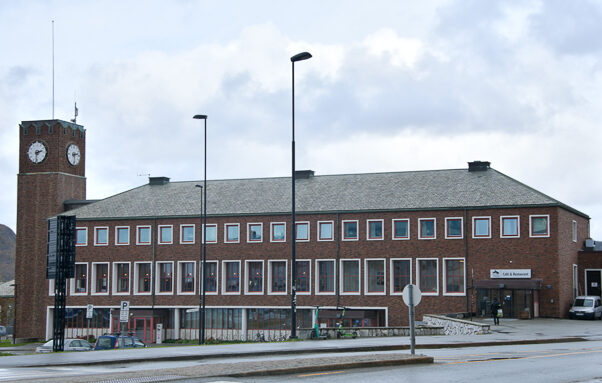
The Bodo train station
The Bodo train station is the terminus of the Nordland Line, a 453-mile railway line between Bodo and Trondheim. Traditionally, the Nordland Line was defined as running from Hell to Bodø. However, the National Rail Administration has officially classified it as running from Trondheim Central Station to Bodø, making it the longest railway line in Norway. Construction was to have begun in 1923, but its completion was delayed until the 1960s due to WWII.

This sculpture, titled “Between the mountains and the sea,” is in Bodo Square. It is made of limestone from the Bjørntvedt quarry in Porsgrunn, Acrylic, optical fibers, and black rubber and is by Phillipp Dommen.
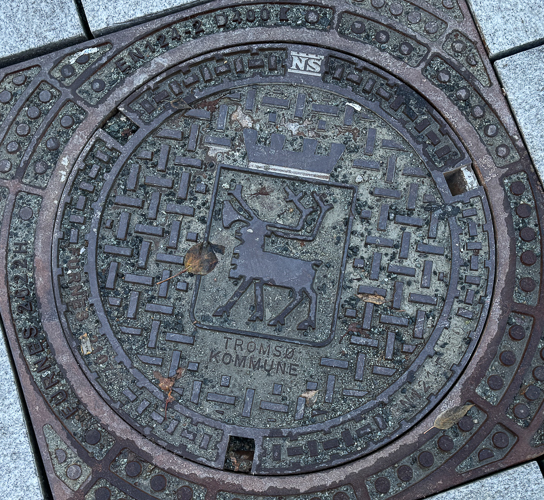
Tromso
We were here to visit the planetarium, and for me, finally eat a Pølse.
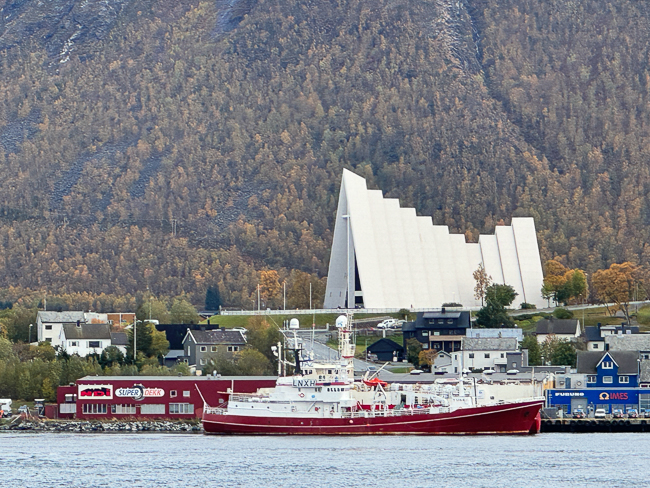
The Arctic Cathedral of Tromso
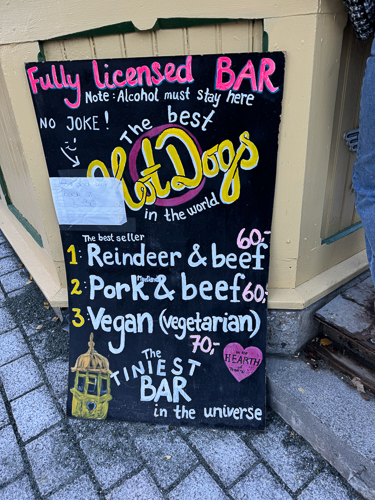
Pølse
I had reindeer and beef topped with fried onions (sprøstekt løk), sweet onions, beets, and mustard served on a hot dog bun, as the server recommended. The hot wine was delicious as well.

On October 2nd, we had our first clear enough night to see some Northern Lights.
Honningsvag
You come to Honningsvag on Magerøya Island to visit the North Cape. While not technically Norway’s northernmost point, it is the most northern place in Europe that can be accessed by an automobile. The first tourist appears to have been an Italian Franciscan priest, Francesco Negri, who came in 1664. The North Cape then became a popular tourist destination during the last decades of the nineteenth century after King Oscar II’s visit in 1873. It is the number one tourist spot in Norway, although it wasn’t too terribly crowded when I was there.
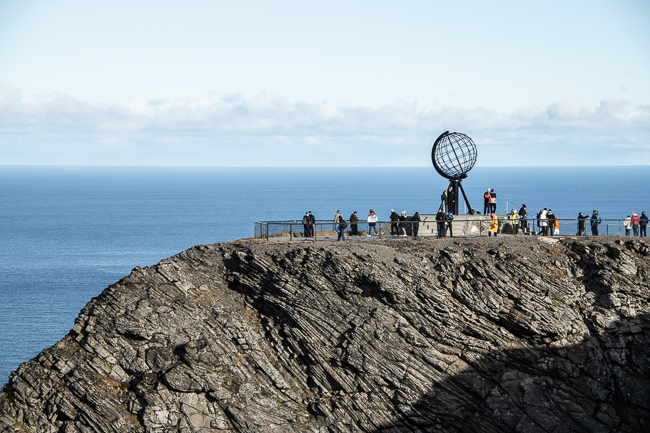
The North Cape
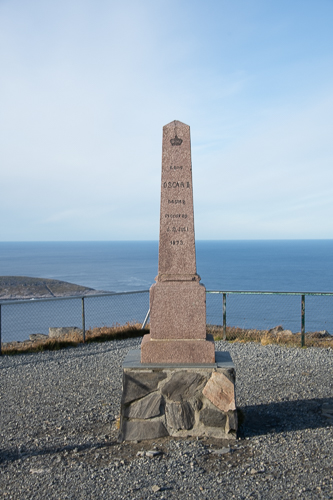
Monument commemorating the visit of King Oscar II of Norway and Sweden in 1873
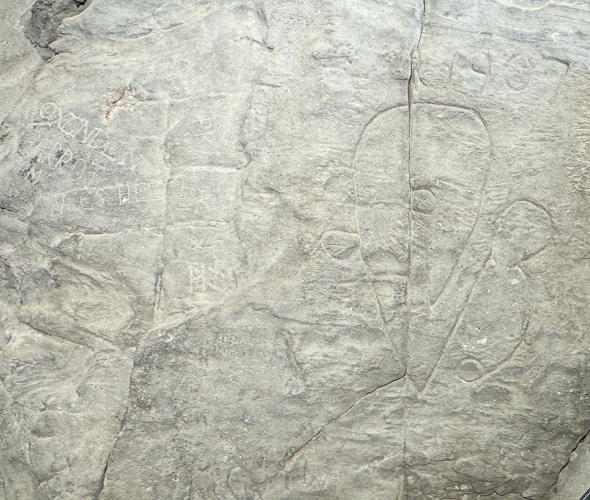
The sign explaining this stone reads: “In 1907, a king from the Far Eastern land of Siam made a journey through Europe and paid a visit to the newly independent state of Norway.
King Chulalongkorn was warmly received by King Hakon and Queen Maud …The King then traveled northwards, reaching Nordkapp, where he had his initials and the year of his visit incised on a rock.”
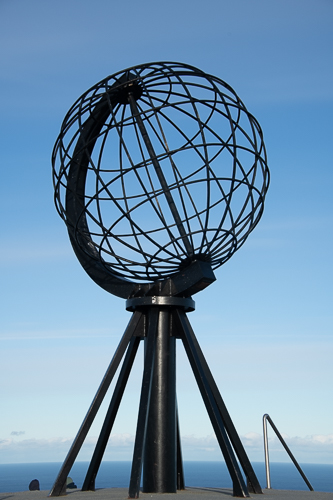
The North Cape Globe Monument

Children of the World at the North Cape
The “Children of the World” sculpture was started in 1988 when author Simon Flem Devold randomly selected seven children from seven countries, Tanzania, Brazil, USA, Japan, Thailand, Italy, and Russia, to visit the North Cape and dream of “Peace on Earth”. During their visit, each 8- to 12-year-old child made a clay relief symbolizing friendship, hope, joy, and working together. In 1989, the reliefs were enlarged, cast in bronze, and erected in a semi-circle outside the North Cape Hall.
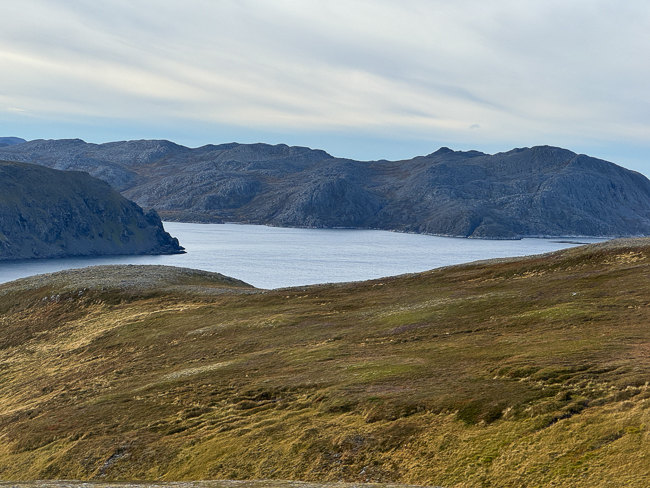
The tundra of Magerøya Island
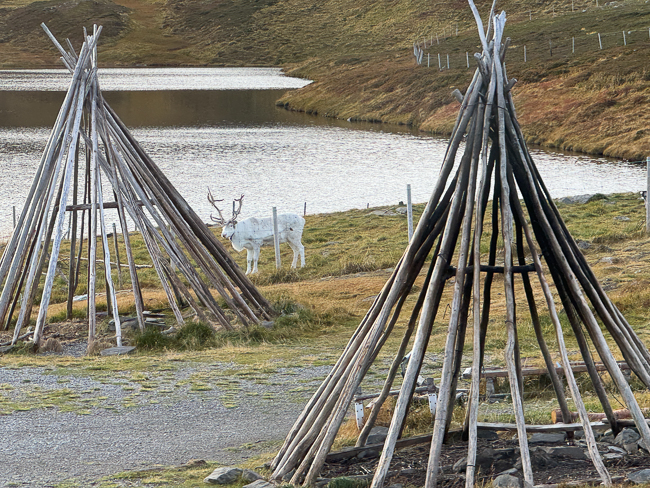
The reindeer on the island
Every year, Sami families from Karasjok, about 156 miles south, bring their reindeer herds by truck and ferry north to scatter throughout the island and graze. This fellow was one of the last to be rounded up to return to their winter home. To get back, they swim.
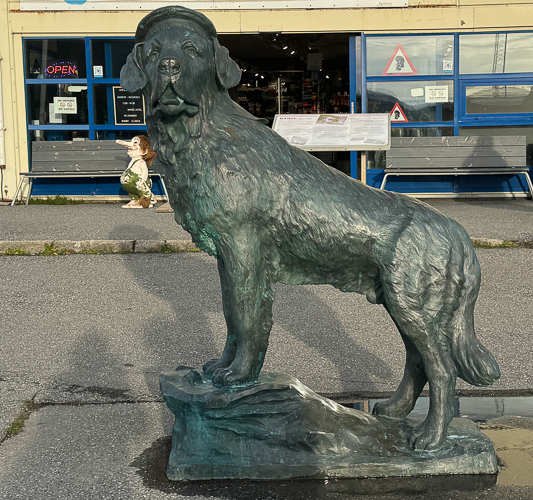
Bamse
Bamse (a Norwegian word for “male bear”, “teddy bear,” or “big boy”) came to Honningsvag in 1937. His owner, Erling Hafto, was the master of the Norwegian whale-catcher Thorodd.
At the onset of the Second World War, Thorodd was drafted into the Royal Norwegian Navy as a coastal patrol vessel, and Bamse was enrolled as an official crew member. After the Nazi invasion of Norway, the Thorodd was part of the naval opposition to the Germans, and one of its uses was POW transport.
In battle, Bamse would stand on the front gun tower of the boat, so the crew made him a special metal helmet. His acts of heroism included saving a young lieutenant commander who had been attacked by a man wielding a knife by pushing the assailant into the sea and dragging back to shore a sailor who had fallen overboard. He was also known for breaking up fights among his crewmates by putting his paws on their shoulders.
Bamse eventually became the mascot of the Royal Norwegian Navy and then of all the Free Norwegian Forces.
Bamse died in 1944, and it is said that 800 people attended his funeral.
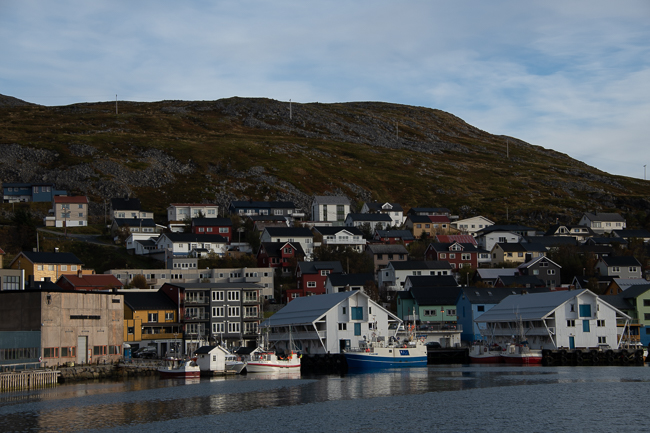
A small glimpse of the town of Honningsvag
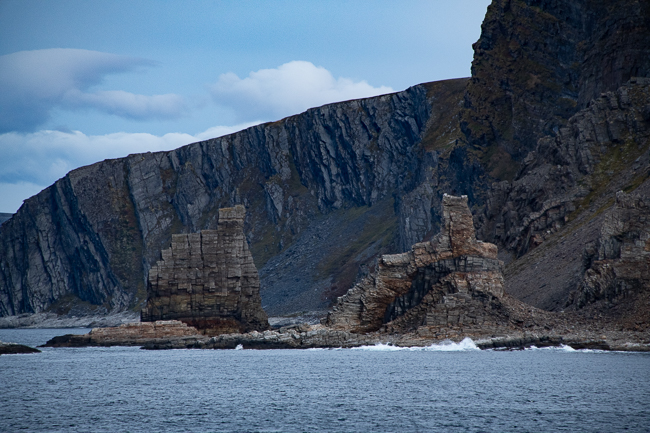
Finnkirka rock formation
Approaching Kjøllefjord is the Finnkirka rock formation. According to legend, Finnkirka was an ancient sacrificial site for fishermen, seafarers, and the Sami. Those sailing along the coast feared the stretch of sea past Nordkyn. On their eastward journey, seafarers sailed as far as the sea cliff Altertavla on the eastern side of the fjord and made an offering for a safe onward journey. On the return voyage, they sailed to Finnkirka on the western side of the fjord and offered thanks for surviving the journey around Nordkyn.
It has been continually too cloudy to really see Northern Lights. This was the evening of October 3rd.
